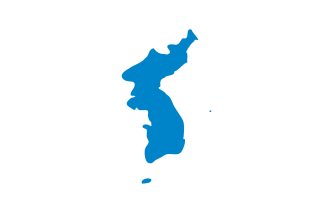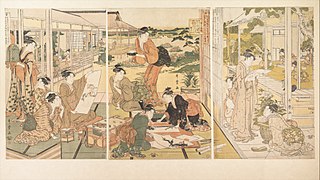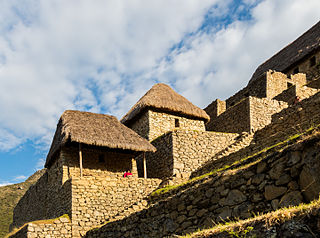
Asia is the largest continent in the world by both land area and population. It covers an area of more than 44 million square kilometers, about 30% of Earth's total land area and 8% of Earth's total surface area. The continent, which has long been home to the majority of the human population, was the site of many of the first civilizations. Its 4.7 billion people constitute roughly 60% of the world's population.

Central Asia is a subregion of Asia that stretches from the Caspian Sea in the southwest and European Russia in the northwest to Western China and Mongolia in the east, and from Afghanistan and Iran in the south to Siberia in the north. It includes Kazakhstan, Kyrgyzstan, Tajikistan, Turkmenistan, and Uzbekistan. The countries as a group are also colloquially referred to as the "-stans" as all have names ending with the Persian suffix "-stan" in both respective native languages and most other languages. Central Asia borders Eastern Europe to the west, West Asia to the southwest, South Asia to the southeast, North Asia to the north, and East Asia to the east.

The history of Asia can be seen as the collective history of several distinct peripheral coastal regions such as East Asia, South Asia, Southeast Asia and the Middle East linked by the interior mass of the Eurasian steppe. See History of the Middle East and History of the Indian Subcontinent for further details on those regions.

Korea is a peninsular region in East Asia consisting of the Korean Peninsula, Jeju Island, and smaller islands. Since the end of World War II in 1945, it has been politically divided at or near the 38th parallel; in 1948, two states declared independence, both claiming sovereignty over the entire region: North Korea in its northern half and South Korea in the south, which fought the Korean War from 1950 to 1953. The region is bordered by China to the north and Russia to the northeast, across the Amnok (Yalu) and Duman (Tumen) rivers, and is separated from Japan to the southeast by the Korea Strait.

The 11th century is the period from 1001 through 1100 (MC) in accordance with the Julian calendar, and the 1st century of the 2nd millennium.

East Asia generally encompasses the histories of China, Japan, Korea, Mongolia, and Taiwan from prehistoric times to the present. Each of its countries has a different national history, but East Asian Studies scholars maintain that the region is also characterized by a distinct pattern of historical development. This is evident in the relationships among traditional East Asian civilizations, which not only involve the sum total of historical patterns but also a specific set of patterns that has affected all or most of traditional East Asia in successive layers.
Sinocentrism refers to a worldview that China is the cultural, political, or economic center of the world.

A torana is a free-standing ornamental or arched gateway for ceremonial purposes in Hindu, Buddhist and Jain architecture of the Indian subcontinent. Toranas can also be widely seen in Southeast Asia and parts of East Asia. Chinese Shanmen gateways, Japanese torii gateways, Korean Iljumun and Hongsalmun gateways, Vietnamese Tam quan gateways, and Thai Sao Ching Cha were derived from the Indian torana. They are also referred to as vandanamalikas.

Rice wine is a generic term for an alcoholic beverage fermented from rice, traditionally consumed in East Asia, Southeast Asia and South Asia. Rice wine is made by the fermentation of rice starch, during which microbes enzymatically convert its starches to sugar. Sake in Japan, Mijiu in China, and Cheongju and Makgeolli in Korea are some of the most notable types of rice wine.

The repeating crossbow, also known as the repeater crossbow, and the Zhuge crossbow due to its association with the Three Kingdoms-era strategist Zhuge Liang (181–234 AD), is a crossbow invented during the Warring States period in China that combined the bow spanning, bolt placing, and shooting actions into one motion.
The early modern period is a historical period that is part of, or immediately preceded, the modern period, with divisions based primarily on the history of Europe and the broader concept of modernity. There is no exact date that marks the beginning or end of the period and its extent may vary depending on the area of history being studied. In general, the early modern period is considered to have lasted from around the start of the 16th century to the start of the 19th century. In a European context, it is defined as the period following the Middle Ages and preceding the advent of modernity; but the dates of these boundaries are far from universally agreed. In the context of global history, the early modern period is often used even in contexts where there is no equivalent "medieval" period.

The culture of Asia encompasses the collective and diverse customs and traditions of art, architecture, music, literature, lifestyle, philosophy, food, politics and religion that have been practiced and maintained by the numerous ethnic groups of the continent of Asia since prehistory. Identification of a specific culture of Asia or universal elements among the colossal diversity that has emanated from multiple cultural spheres and three of the four ancient River valley civilizations is complicated. However, the continent is commonly divided into six geographic sub-regions, that are characterized by perceivable commonalities, like culture, religion, language and relative ethnic homogeneity. These regions are Central Asia, East Asia, North Asia, South Asia, Southeast Asia and West Asia.

The Sinosphere, also known as the Chinese cultural sphere, East Asian cultural sphere, or the Sinic world, encompasses multiple countries in East Asia and Southeast Asia that were historically heavily influenced by Chinese culture. The Sinosphere comprises Greater China, Japan, Korea, and Vietnam. Other definitions may include the regions of modern-day Mongolia and Singapore, due either to historical Chinese influence or a contemporary overseas Chinese population. The Sinosphere is different from the Sinophone world, which indicates regions where the Chinese language is spoken.

Buddhist art is visual art produced in the context of Buddhism. It includes depictions of Gautama Buddha and other Buddhas and bodhisattvas, notable Buddhist figures both historical and mythical, narrative scenes from their lives, mandalas, and physical objects associated with Buddhist practice, such as vajras, bells, stupas and Buddhist temple architecture. Buddhist art originated in the north of the Indian subcontinent, in modern India, Pakistan and Afghanistan, with the earliest survivals dating from a few centuries after the historical life of Siddhartha Gautama from the 6th to 5th century BCE.

Indian people or Indians are the citizens and nationals of the Republic of India. In 2022, the population of India stood at 1.4 billion people, of various ethnic groups. According to United Nations forecasts, India overtook China as the world's most populous country by the end of April 2023, containing 17.50 percent of the global population. In addition to the Indian population, the Indian overseas diaspora also boasts large numbers, particularly in the Arab states of the Persian Gulf, former British colonies, and the Western world.

In world history, post-classical history refers to the period from about 500 CE to 1500 CE, roughly corresponding to the European Middle Ages. The period is characterized by the expansion of civilizations geographically and the development of trade networks between civilizations. This period is also called the medieval era, post-antiquity era, post-ancient era, pre-modernity era, or pre-modern era.

The economy of East Asia comprises 1.6 billion people living in six different countries and regions. The region includes several of the world's largest and most prosperous economies: Taiwan, Japan, South Korea, China, Hong Kong, and Macau. It is home to some of the most economically dynamic places in the world, being the site of some of the world's most extended modern economic booms, including the Taiwan miracle (1950–present) in Taiwan, Miracle on the Han River (1974–present) in South Korea, Japanese economic miracle (1950–1990) and the Chinese economic miracle (1983–2010) in China.

East Asia is a geographical and cultural region of Asia including the countries of China, Japan, Mongolia, North Korea, South Korea, and Taiwan. Additionally, Hong Kong and Macau are the two special administrative regions of China. The economies of China, Japan, South Korea, and Taiwan are among the world's largest and most prosperous. East Asia borders North Asia to the north, Southeast Asia to the south, South Asia to the southwest, and Central Asia to the west. To its east is the Pacific Ocean.

The gunpowder empires, or Islamic gunpowder empires, is a collective term coined by Marshall G. S. Hodgson and William H. McNeill at the University of Chicago, referring to three early modern Muslim empires: the Ottoman Empire, Safavid Empire and the Mughal Empire, in the period they flourished from mid-16th to the early 18th century. These three empires were among the most stable empires of the early modern period, leading to commercial expansion, and patronage of culture, while their political and legal institutions were consolidated with an increasing degree of centralization. They stretched from Central Europe and North Africa in the west to Bengal and Arakan in the east. Hodgson's colleague William H. McNeill expanded on the history of gunpowder use across multiple civilizations including East Asian, South Asian and European powers in his "The Age of Gunpowder Empires". Vast amounts of territory were conquered by the gunpowder empires with the use and development of the newly invented firearms, especially cannon and small arms, in the course of imperial expansion. Like in Europe, the introduction of gunpowder weapons prompted changes such as the rise of centralized monarchical states.














